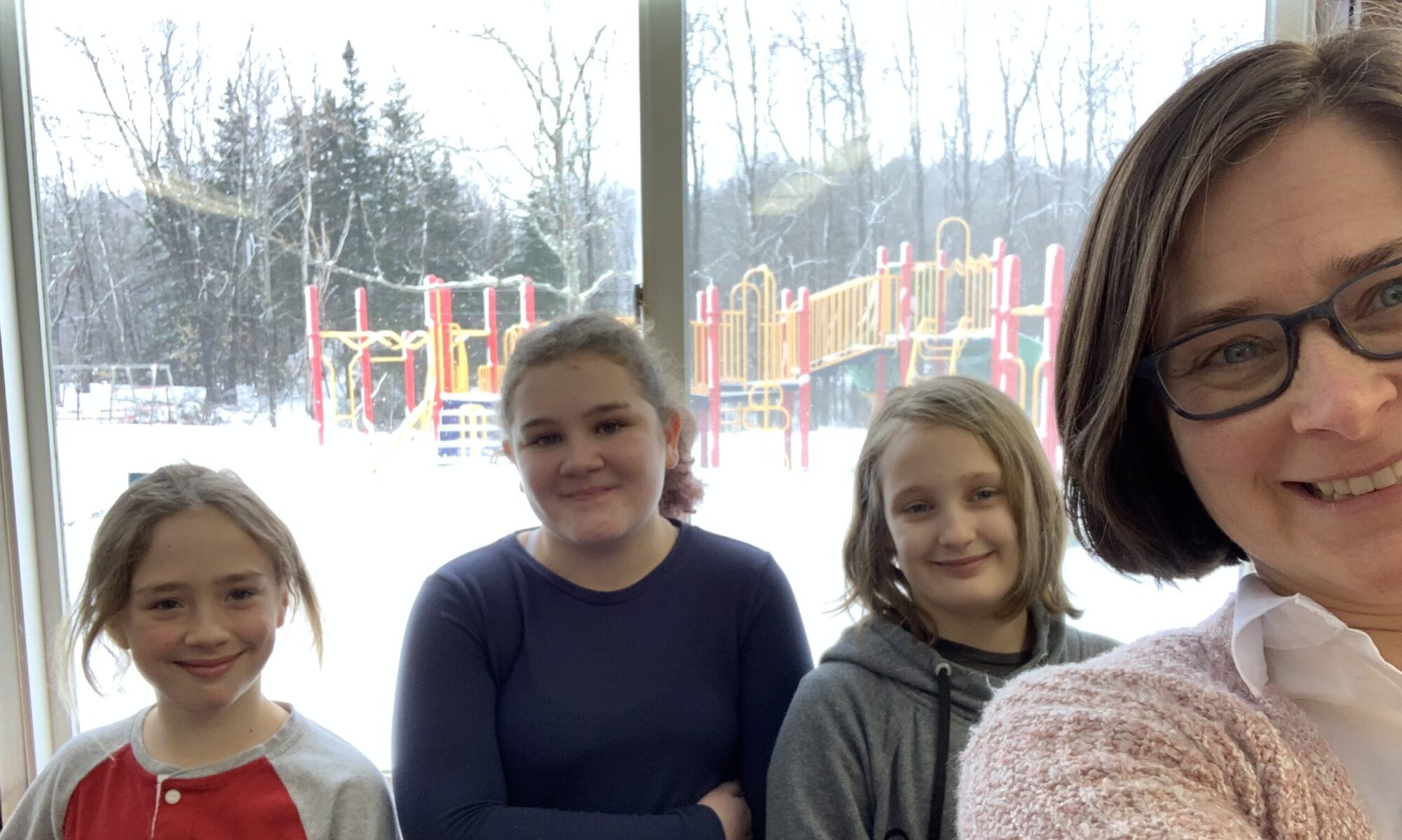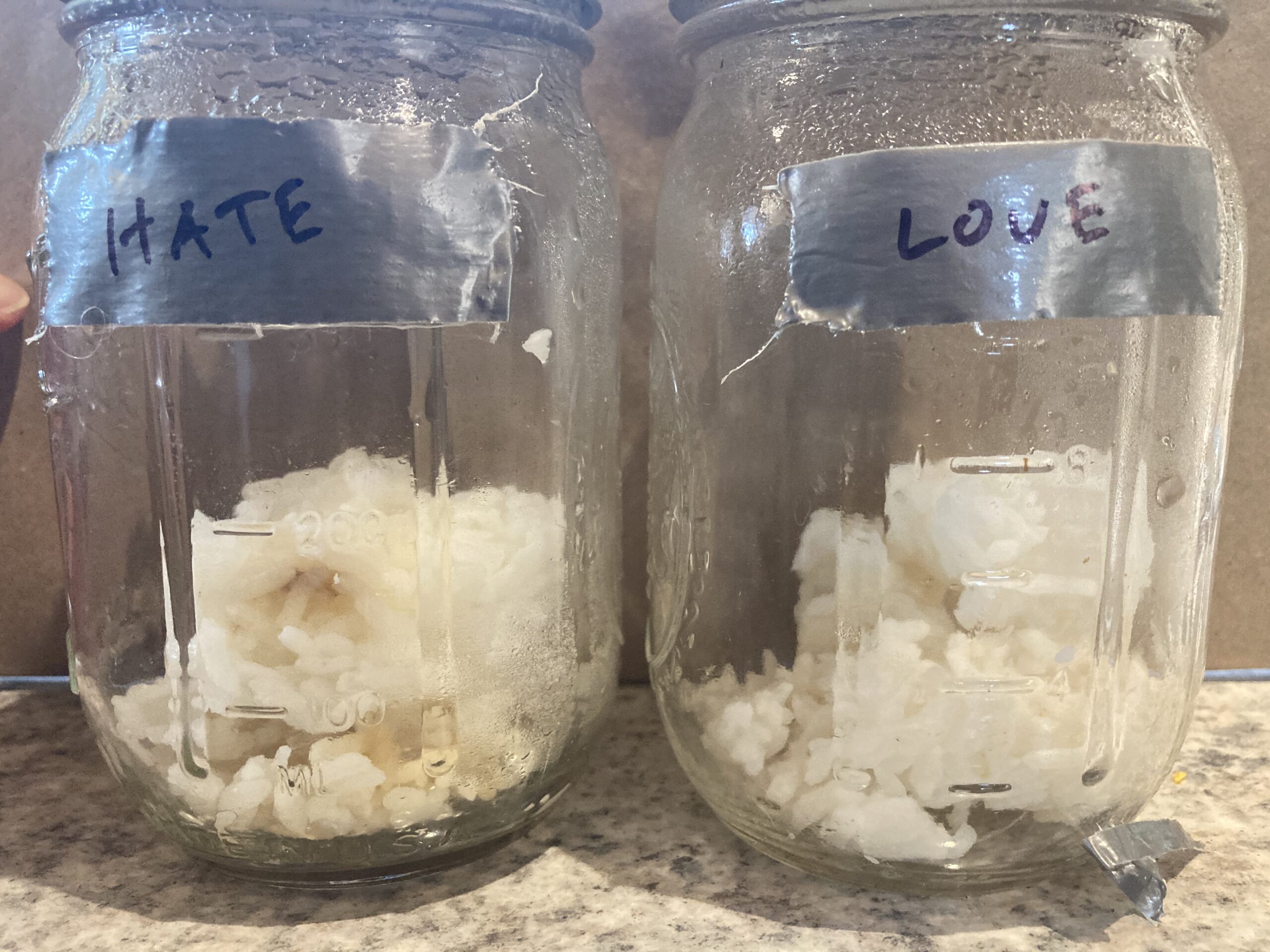My mom is into homeopathy and I am part Japanese. So for Christmas she gave me a book by Japanese scientist and holistic thinker Masaru Emoto called The Secret Life of Water. This guy has been taking photographs of ice crystals for decades. The photos reveal how different things impact the formation of these crystals and show up visually. Things like the words taped to containers, the part of a river where the water was collected from, the music played to the water, even the pictures placed near the water. It’s part of a practice called Hado. Absolutely wild and unbelievable.
But using rice I saw (and smelled) it myself.
I ran a little experiment. I took some leftover rice and put half of it in one Mason jar, and half in another. Then I put a a piece of tape on each and wrote “hate” on one and “love” on the other. And I put them on the counter next to each other and waited.
After a couple of weeks there was no denying the difference. The love jar wasn’t perfect (or edible, probably!) but the hate jar was relatively yellow with lots more obviously rotting spots. As a result, you could see it from across the room. And the smell was very different, too. It turns out, love smells faintly of vinegar and hate is distinctly blech. The labels had actually changed the chemistry!
So what does this mean? I returned to the book with renewed interest to understand his explanation for these phenomena.
Dr. Emoto points to Hado, which is the Japanese word for vibration. He offers three words to understand Hado: frequency, in that everything in the universe vibrates at its own unique frequency; resonance, due to the fact that frequencies between connected things or beings tend to synchronize; and similarity, where the macro and micro resemble each other like fractals.
I see clear applications to schools. The greatest educators see and appreciate every student’s true unique self, the best classrooms harmonize with a resonance of curiosity and belonging, and the ideal schools are those where students and teachers are empowered in a way that echo the promise of pluralistic democracy.
One curious finding from Emoto was that the crystals formed by the concept of unhappiness were quite beautiful. He notes that unhappiness and happiness are two sides of the same coin, rather than opposites. He posits that appreciation and love are the keys to navigating our unhappiness and raising our consciousness to find true happiness.
As I write this I am watching the inauguration.
Joe Biden just asked for a moment of silence for those impacted by the pandemic, and then noted the challenges ahead such as America’s standing in the world, climate change, and systemic racism. My emotions are all over the place with grief, hope, worry, and joy intermingled.
Hado teaches me to seek resonance with positive vibrations. To find the love within myself that reverberates throughout the universe. Not in a toxically positive sort of way, but at the level of the fundamental connection of all people and things. As educators have shown in the last year and forever, we can face difficult challenges while vibing with authentic love.
Like Hado, we can be real while being extraordinary.
We can be pragmatic AND hopeful.
As I close this note, Amanda Gorman, National Youth Poet Laureate, brought me to tears.
She ended with these poignant words: “There is always light if only we are brave enough to see it, if only we’re brave enough to be it.”
Thank you for being the light,
Life


